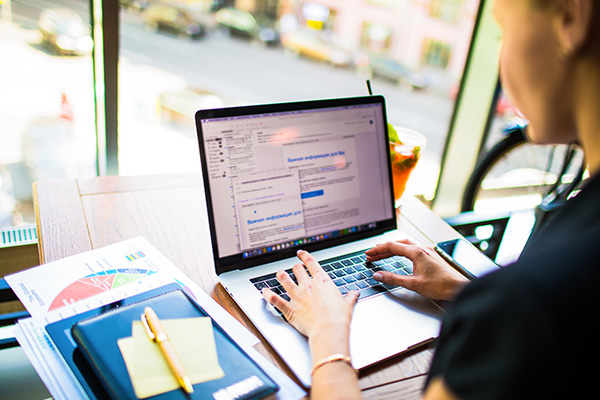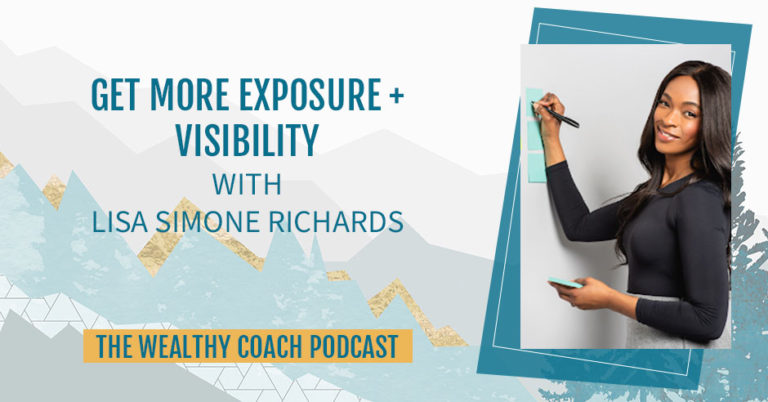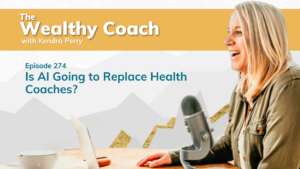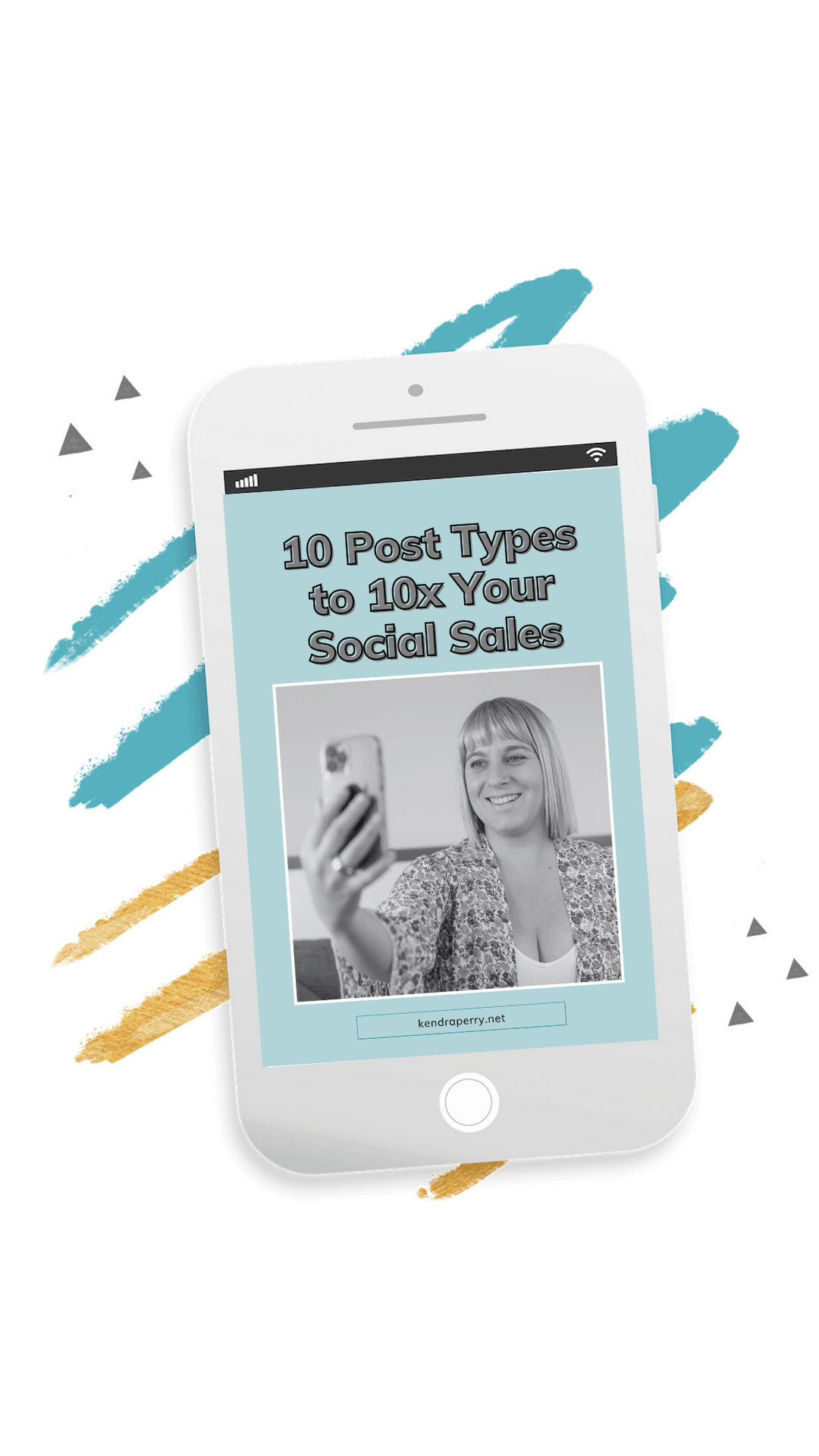What does it really take to market our business? Because we’ll tell you up front it’s not just all about posting on social media. What does it really take to get in front of dozens, hundred, thousand, and even millions of your ideal clients? In this episode, Lisa Simone Richards will be sharing with us how to leverage on other people’s audiences and achieve the visibility and exposure we seek for our business! Lisa Simone Richards is a PR and visibility strategist for online coaches who wants to get seen everywhere. Tune in and learn how to go from invisible to in-demand!
—
Listen to the podcast here
Get More Exposure + Visibility With Lisa Simone Richards
In this episode, we’re going to be talking about visibility and public relations. What is that? When we think about marketing our business, we’re thinking about, “I need to be posting on social media.” If you are only using organic social media as means to reach more people, what you may have noticed is that growth is very slow. It usually doesn’t work for most people if that is your only strategy. Luckily, there’s this amazing thing you can do to get in front of dozens, hundreds, thousands, or even millions of your ideal clients. That is leveraging other people’s audiences.
That’s what we’re going to be talking about with Lisa Simone Richards. Lisa is a PR and visibility strategist for online coaches who want to get seen everywhere. Through her free workshops, master classes, and mentorship program, she gives you insider secrets on how to get exposure and reach more people without spinning on social media or wasting more money on Facebook ads. Her clients learn the lather-rinse-repeat formula for more visibility, which makes them more sales. They go from invisible to in-demand, getting interviewed on top podcasts, partnering with big names in their industry, and building their authority expert status by getting featured on major media like Fox, NBC, Forbes, Inc., and more. Let’s dive into this amazing interview with Lisa.
—
Lisa, welcome to the show.
Kendra, I’m so excited to be able to share with you and your audience.
I am so excited to talk about visibility and getting more exposure online because I know my audience wants more of that, but they don’t really know how to get it. Before we dive into all of your expertise, I’d love to know how you got into the public relations space.
I’ll take you back to one specific moment in undergrad when I was in my first year at Western. When I was in my first year, I remember having lunch with a girl who was in her fourth year. She was getting ready to graduate. She was sharing with me that after Western, she would go to Humber College for PR school. This was in 2002. Sex and the City was in its prime. Samantha Jones, one of the four main characters, was a publicist. On the show, she was always going to fashion shows and dinners and knew all these cool people and these exclusive events and parties. I was like, “Do you know what looked like fun? That.” I started in fashion and beauty PR for the first few years.
I moved into an agency where I got to work with cool corporate clients like Staples, Virgin, and Crayola. After I did the agency and the fashion thing, I did fitness for a few years. That was when I got my first taste of working with a small business. I was with this fitness company for four years, and over four years, we took the company’s revenues from $400,000 a year to over $4 million a year. A large part of that was visibility.
We were always on television and in magazines. We were the people who had that it brand and that it factor. I thought it would be cool to take this knowledge and companies who were paying $10,000 a month for this thing to be able to share it with entrepreneurs and small business owners who aren’t necessarily in a position to take on that ticket just yet to share with them how to get this visibility so that they’d be able to get known as well.

I love that so much. Did you end up getting to live that very glamorous lifestyle like Samantha Jones?
For the first few years, I did. I was working backstage at various fashion shows. I interned in the beauty department at a magazine. There were always racks of clothes coming in and out, trying new products before they launched. I still have a little bit of dabbling in that world, so I still get to play and go to a few influencer events and whatnot. I get there, and people are like, “Are you a YouTuber?” I’m like, “Thanks for the work that you do.”
Let’s dive into visibility and getting more exposure. Before we started the interview, I was saying how a lot of my students are getting frustrated with social media because they feel like they’re posting and nothing’s happening. They’re not getting the engagement they want. They’re not getting clients. What’s the problem with that strategy?
Here’s the thing that I like to clarify for people. There is a huge distinction between creating content and getting visibility. Content is what we’re putting on our social platforms. Thank goodness we have access to Instagram, TikTok, Facebook, and LinkedIn, where we can decide what we want to say, how we want to say it, and when we want to say it. Several years prior, you were at the mercy of an editor or a producer if they would share your story. It’s great that we have these social platforms, but when we’re creating content, we need to remember that this content is, honestly, for the most part, only getting in front of the people who already follow you.
The likelihood of landing on that search page is not that high. You’re just getting in front of the people who are already a part of your ecosystem. Beyond that, we also know that the algorithm isn’t showing your content to 100% of followers. The purpose of content is to nurture your existing audience. Visibility, on the other hand, is reaching new people, getting seen by people who weren’t aware of you before so that now they can follow you, they can sign up for your email list, and the content that you’re already doing is going to land in front of them. We have to make sure there are two different things, such as visibility, reaching new people, and making sure we’re always growing our followers, our email list, getting in front of new leads, and then doing the content that creates that know, like, and trust factor.
I love that so much. I can see the distinction between the two. You’re right. You’re pretty lucky if you’ve reached 2% of your followers on Instagram, which could be a lot of people if you have 100,000 followers, but I know my audience probably has under 2,000 followers that you’re like, “I’m creating all this content for such a small handful of people.” That being said, social media is important, and we can use it, but it sounds like there’s a better way to get out in front of more people. Can you explain the different ways or mediums through which you could achieve greater visibility?
I want to hammer home the concept of leverage. There is somebody out there who has a group of your ideal clients already hanging out. Maybe that’s attending a conference, a virtual summit, listening to a podcast, or reading a blog or a website. It’s a matter of figuring out, “Who has all of my ideal clients already hanging out with them so I can fast forward the process of getting in front of who I want to get in front of?” Once you realize who that person is and what that platform is, come up with an idea of value to get in front of them. You were asking me about what are some different ways we can use visibility to get in front of different audiences.
I like to break this down into what I call the ladder of publicity. When you think about it, chances are you have a preferred way of consuming content, whether reading it, listening to it, or watching it. I encourage my clients to make sure that they’re getting seen and featured in all three of those ways. This is where the ladder of publicity comes in, and we can go up one step at a time. At the very bottom, you have written media. Some people prefer to read content. When my husband and I are making dinner, I love to turn on YouTube channels, play a video, pause, and do the thing. He’s like, “I can’t stand that person. Can we just read the blog post on how to do it, please?” At the end of the day, we have the same end goal, such as a delicious dinner, but different ways of getting there.
When it comes to written content, back in the day, it used to be magazines and newspapers. It still exists now. It’s a great way of establishing your credibility, but maybe it looks like doing a guest blog post for somebody else’s site instead of doing a blog post on your own. Maybe it is writing for a website like Medium.com or the Huffington Post that has a huge readership versus writing on your own newsletter. Maybe what that could also look like is connecting with a reporter for a magazine or website and letting them interview you so that they write the article and include your quotes and your name on it. You don’t have to do any writing. That’s one way to get out there, written media, guest blogging, being interviewed, and writing for other websites. Is it cool if I move up to the next stage?
Let’s do it.
I like getting started with written media, especially for people who aren’t used to being visible, because there’s a certain level of putting yourself out there. With written content, you can come back and edit it 24 hours later. You can send it out to somebody else to review. You can be in control of when you hit submit, and you can start building your confidence once you start seeing your name appear in other places. When we move up the ladder, we’re now going into audio content so people can hear your message and connect with you that way.

Maybe it looks like being on someone’s show just like this, where I’m reaching a new audience. Maybe it is co-hosting or co-moderating a room on Clubhouse where you’re getting to have conversations, which I know you’ve already successfully done, and really finesse your messaging. Even if you’re a brick and mortar business, maybe that looks like getting radio coverage. It’s not super sexy, but if you’re relying on foot traffic to come into your office, that’s a great way to target local people who have that ability. The second way is being heard, then when we move up to the top of the ladder of publicity, you could probably guess next comes being seen.
This is where people get to have a sense of your energy that the know, like, and trust factor builds a lot quicker. Being seen looks like back in the day, it used to be getting on television, but now maybe that’s doing live in somebody else’s Facebook group. Maybe that’s presenting at a live or a virtual summit. Maybe that is being on television. Maybe it is guest training in somebody else’s mastermind. There are so many different ways that we can get seen. Between written ways, audio ways, and visual ways, we’ve probably listed out at least ten so far.
There are all kinds of ways, and it depends on what the person’s skills or strengths are.
When you’re getting started, pay attention to who you are as a person and what works for you. I have Only Child syndrome. Throw me in front of a crowd of 300 people on a stage, and I have no problem jumping up there and being like, “Everyone, put your phones down. Let’s pay attention to me now.” That could be someone else’s worst nightmare. Knowing where you’re at and where your skillset lies is a great place to get started because as you build the confidence, then you’re going to be able to do the things that are a little more uncomfortable for you.
You mentioned earlier that it sounds like you need to know about your niche because you don’t want to be getting in front of audiences if the person whom you serve isn’t in that audience.
Here’s how I like to think about it. Before I ever start working with somebody, and I always have a name for everything, I take them through my ABCs of visibility. What those are is it comes down to what is the intention and what is the purpose of being seen. It’s great to get on television, but if you’re not talking about your message and not in front of the right person, someone’s going to come back to me and say, “Lisa, it didn’t work.” I always start with intentionality. What the ABCs of visibility looks like is, A) Are you looking for Awareness so that your ideal client knows who you are and knows that you exist?
It’s funny because since I have a fitness background, I tend to work with a lot of gym and studio owners. They’re hardcore into fitness, obviously. They’ll come to me and say, “Lisa, I want to get in front of women who are going to the gym for the first time. I’d love to be featured in Oxygen, STRONG, and Muscle & Fitness.” I have to be like, “Women going to the gym for the first time are not reading hardcore body-building magazines. I know you don’t read Self, Fitness, Shape, or POPSUGAR, but that’s where they’re hanging out. That’s where you need to be seen.” That’s what the A stands for, building Awareness in front of your ideal client.
Alternatively, are you someone who is looking to B) Create a Buzz? Let’s say you’re about to launch a book or a course. We know that people can’t just hear about something once and think they’re going to take action from it. I always think about similar to one of the movies coming out. You don’t just hear it once. It’s on Entertainment Tonight. It’s on Access Hollywood. The actors are on various podcasts and radio shows. Someone’s in a new relationship, and someone just got out of a relationship. There are all these things to keep this movie title top of mind for you. When you’re launching, you want people to hear about you all over the place. Here’s a way that worked really well for one of my clients.
I worked with a woman named Nora, who’s a preconception health coach. She’s looking to get in front of women who want to get pregnant. She went on twenty different fertility shows about getting pregnant, and then her sales calendar started filling up with these people who heard her on all of these shows. They knew her methodologies, and they wanted to work with her. That’s B) Creating a Buzz. Finally, C stands for Creating Credibility.
Are you in a stage where you’re not necessarily looking for your next client but want to enhance your reputation in the industry? Do you want to be rubbing shoulders and elbows with the people whose courses you’ve brought bought the mentors whose conferences you’ve attended? Maybe now that looks like getting featured in something like Forbes or Inc. You can have those problems, as seen on logos on your website, so the way people perceive you shifts. It comes down to these three. Are you looking to build A) Awareness, B) Buzz, or C) Credibility? That’s going to influence where are the places that make sense for you to get featured.
That makes a lot of sense. I know I can hear my audience saying this because they’re relatively new. Some of them might be six months or a few years into their business. I know what their thinking is, “I’m not anyone. Why would anyone want to feature me?”
One of the things I like to say is that it comes down to having the confidence to put yourself out there and believing that your message matters. It was interesting when I was first getting into my own business. I’ve been a publicist for many years, but when it came to me putting myself and my products out there, this is when the game changed. I wasn’t pitching for Staples or Virgin Mobile anymore. I remember there was a woman who did the exact same thing as me. She’s a fitness PR who lived down the street here in Toronto. In 2015, everyone was in California. I remember having such an imposter complex like, “Who am I have put myself out there? She’s out there already saying the same thing.” What I understood, and I instill this in my clients, too, is that the way you communicate your message is going to translate differently.

For that person, she is all hoodies, whereas like a sailor. I’m a lot more high-energy and spirited, and I would drive some people crazy. While we were doing the same thing, some people are going to resonate better with me, and some people are going to resonate better with her. I always like to have my clients think when they’re feeling like, “Who might have put myself out there? Why would anybody listen to me? Why would they go with somebody else?” What are the results you’ve created for yourself? What are the results you’ve created for your clients? How much money have you invested in this craft? How much time have you invested in this craft?
As you start going through the numbers and the time and the results, you have a piece of paper in front of you if you’re listing this all out, that’s literally evidence as to who you are and why you’re so good and why you deserve to put yourself out there. It comes down to overcoming that imposter complex, getting clear on who you are and why your message matters, and taking that jump and putting herself out there. Jillian Michaels, I always use her as an example. She didn’t start off as Jillian Michaels. She built her way up through The Biggest Loser and all those other platforms, and then she became who she is now. We can all think of the celebrity who we resonate with and think about us starting on our own path as well.
I love that. In the worst-case scenario, you get a no, and it’s okay.
I’ve been doing this for many years, and I get noes all the time. I get way more noes than yeses. To give everyone a sense of how I get noes all the time, I’ve been doing this for many years. Typically, I will pitch somewhere around 40 podcasts a month, and I get somewhere between 10 and 12 yeses. That’s 75% noes. Do you know what I did? I got in front of 10 or 12 new audiences that I would not have otherwise. Why would I choose to put my focus on, “These people didn’t write back to me or said no to me,” instead of lending focus to looking at how many people I got in front of and how many relationships I’ve built with podcast hosts? I’m willing to take a little bit of a bruised ego for the result on the other side.
It’s probably not personal, either. I obviously get a ton of pitches for this show. Sometimes it’s because, “This isn’t the right fit for my audience,” even though the person is probably amazing, or it’s just like we’re not taking guest interviews right now. It’s not a big deal.
It’s totally not personal. I love taking the emotion out of it.
Can you walk us through your favorite ways to get exposure for free online so that people can start building these ABCs of visibility?
In 2022 and 2021, I love being on podcasts. One of the great things that I want to keep in mind for people who are busy building their businesses is you don’t have time to be a publicist. You don’t want to be doing the stuff I’m doing all day. What would be possible if you were able to nail in your message and find 100 different podcasts you could share on? This isn’t the first podcast where I’ve shared the ABCs of visibility or the ladder of publicity, but every show I’m on is different because of the host, the conversation, and the interaction that we have. I have something standard that I typically do talk about. It’s great that it has this lather-rinse-repeat flow to it.
Why not focus on finding, “What’s the strategy I’m going to use? Is it magazines? Is it a podcast? Is it doing Facebook lives?” Here’s a better way for me to frame this. When I went to a speaking event in 2017, the event host shared with us a quote from her father. He had said, “Don’t change your talk. Change your audience.” That has always resonated with me. I’m used to hearing myself talk about the ABCs of visibility and the ladder of publicity all the time, but I’m always looking for a new audience to share it with. It’s not new to me, but that’s okay. It’s not about it being new to me. It’s about finding new people to share the message with.
I love that so much. It’s coming up with a similar framework that is not new to you but spreading it out to all types of different audiences.
Exactly. You can use it over and over again. You build your confidence with it, and you also build a message that resonates with people. As we were talking about the ABCs of visibility and sharing the story of Nora, who’s a preconception health coach who was building her buzz by being on twenty different podcasts all about fertility, she just went on show after show, talking about her 4R method to getting pregnant. When she would get on calls with people, they were reiterating the 4Rs to her. The first time someone hears something, it’s not necessarily going to stay there forever, so repetition is not a bad thing.
I say that all the time because I teach a lot about social media, and people are like, “I feel like I’m just repeating myself.” I’m like, “You’re onto something because we’re trying to get known for a few key things.” It’s like your fertility client there who is talking about her four-step method. She’s known for that one thing. I’m sure she feels like she’s repeating herself a million times, but it doesn’t land that way with everyone else.
Typically on Mondays, on my Instagram stories, I’ll do a to-do list of the day of my various posts. I was doing it one Monday, and I was like, “I feel like I used this picture two weeks ago. Did I?” and then I was like, “You don’t even remember. Do you think other people remember, Lisa?” People who are going through so many stories that they’re going to be like, “Lisa used that picture three weeks ago,” and I was like, “That’s silly.”
It’s so true. I talk about niching so much sometimes that I feel like I could vomit. I’m like, “Niching again.” My audience goes nuts for it every single time.
It’s not about us. It’s about the people we’re serving and the value we can give them. We remove ourselves and our interests from the equation, serve others, and it ends up being easy because it’s also consistent.
Are there other ways that people can get free exposure?
We have gone through a ton of them so far with leveraging other people’s platforms. I want to make sure I don’t bring too many things into the mix. I’m going to take that cue on repetition and think about, “What are three ways you could be read about? What are three ways you could be heard? What are three ways you could be seen?” and lean into those and rewind the episode if you need to.
When it comes to reaching out, let’s say I’m like, “I’m going to do this. I’m going to pitch a podcast,” what is a big mistake that most people are making that you would tell me to avoid?
The number one mistake that people make when they’re pitching themselves for any kind of exposure opportunity is they make it all about themselves. I’ve had some pitches come in like that. Let’s say I sent a pitch that said, “My name’s Lisa. I have a six-month mentorship program. I did all of these things, and this is about me and me. Can I come on your show?” You’d be like, “I don’t want to give you a free advertisement.” You would not even hit reply. You would just hit delete. There’s nothing of value there for you or your community. It’s just someone looking for free advertisements, and those things cost money.
When people are sending out a pitch, I always encourage them to think from the framework of what is the value for the audience. That’s the only thing you’re going to get a yes to, not your personal promotion. A cool trick to think about is when you’re writing a pitch and about to hit send on that email, scroll through the left paragraph and margin of that page. How many paragraphs begin with I, me, and my? If they’re all beginning with I, me, and my, you made the entire thing about you, and you need to reposition it. It can say the same thing, but it needs to be switched around to be value-driven for the audience.
That is so important. Always approach it from how you can serve the person to who you’re pitching to and their audience.
Everybody’s tuned into WIIFM, What’s In It For Me? If you’re just talking about yourself, they don’t care as much.
It’s so true for so many aspects of business and not just pitching. What we see on social media, for example, a lot are influencers. With influencers, and I’m not shaming influencers, but it’s more about them and their lifestyle and like, “Follow my cool fashion.” As business owners, we think we’re supposed to do that and wonder why we’re not getting clients.
A lot of what we’ve talked about is creating distinctions. There is a distinction between positioning yourself as a business owner versus an influencer. Let me say it that way.
There’s a time and a place for a little bit of influencer in your social media because people want to know about you, but it’s always about them.
If you can share something that someone is going to make a difference for someone, and they can implement it and have success in less than five minutes, they’re going to have such a positive association with you. When it comes time to take it all the way, guess where else they’re going to go? They’re going to come right back to you.
Let’s say this. I had never pitched anything before in my life. I’m going to pitch a guest blog opportunity, a podcast, or whatever. What is the first thing I should do before I pitch?
Have we found the right place yet? Are we writing the pitch? What stage are we in?
We’ve made the decision that we’re going to pitch something. We don’t know what. We’re just like we’ve read this episode and like, “Lisa, I am on board. I’m going to do this. What’s the next step I should take?”
The next step is to check in with five of the people that you’ve worked with, who you’ve loved working with, or who you know would be great clients and check in with them. When you’re looking for information on my topic, where do you turn to? I think so much in the online coaching space, we’re doing these ideal client avatar exercises in our heads and making things up rather than speaking to people.
Ask them, “What podcasts are you listening to? What websites are you going to for information on this? What influencers are you following?” Hopefully, when you ask five people this question, five of your ideal clients, you’re going to hear some things over and over again. When you get that repetition, that tells you, “That’s a place that I should be tuning into to find more people like them.” Check-in with your people. Where are they getting information from? Then start investigating those places to find more like them.

It’s like this market research thing needs to happen first. Lisa, you have a podcast pitch template for our audience. Can you tell us more about that?
What’s the next step once you find the right place to pitch yourself and you’re staring at a blank screen with a cursor blinking at you thinking, “What do I write here?” I like to share with people, “Here’s the exact template that I use to do podcast pitching.” To be clear, guys, you’re going to need to make some tweaks to this. Nobody likes to receive a copied and pasted email. The good news is there are only four things you need to change in it. In my Perfect Podcast Pitch, what you’re going to get is the exact copy of the podcast pitching template that I use so you can see how I do it. You’re also going to get a fill-in-the-blank template. Now you can drop in your information instead of mine once you’ve seen the example of how I do it. That free download is available at www.ThePerfectPodcastPitch.com.
Lisa, if people want to follow you online, where can they find you?
The best place is to look me up on LinkedIn. I’m the only Lisa Simone Richards. That’s my Instagram handle, and that’s where you can find me on LinkedIn as well.
Thank you, Lisa. I really appreciate this. Everyone, download that Podcast Pitch Template and start pitching and get yourself out there. Thank you, everyone, for reading. I will see you next episode, where I help you become wealthy AF.
Important Links
- Lisa Simone Richards
- Medium.com
- www.ThePerfectPodcastPitch.com
- Lisa Simone Richards – LinkedIn
- Instagram – Lisa Simone Richards
About Lisa Simone Richards
 Lisa Simone Richards is a PR & Visibility Strategist for online coaches who want to get seen everywhere.
Lisa Simone Richards is a PR & Visibility Strategist for online coaches who want to get seen everywhere.
Through her free workshops, masterclasses and mentorship program, she gives you insider secrets on how to get exposure and reach more people without spinning on social media or wasting more money on Facebook ads.
Her clients learn the lather-rinse-repeat formula for more visibility which makes them more sales. They go from invisible to in-demand getting interviewed on top podcasts, partnering with big names in their industry and building their authority expert status by getting featured on major media like FOX, NBC, Forbes, Inc., and more.
On weekends you can find her playing in the kitchen with her husband, petting ALL the dogs in the park, and watching way too many fashion styling videos on YouTube.
Get Lisa’s Perfect Podcast Pitch Template: www.theperfectpodcastpitch.com
Connect with Lisa on Social:
@lisasimonerichards
Website: www.theperfectpodcastpitch.com


![[BEST OF] How To Stop Creating Boring Ass, Snooze-Fest Content For Social Medias, Snooze-Fest Content For Social Media](https://kendraperry.net/wp-content/uploads/2025/04/Podcast-Design-Horizontal-Audiogram-58-300x169.png)



